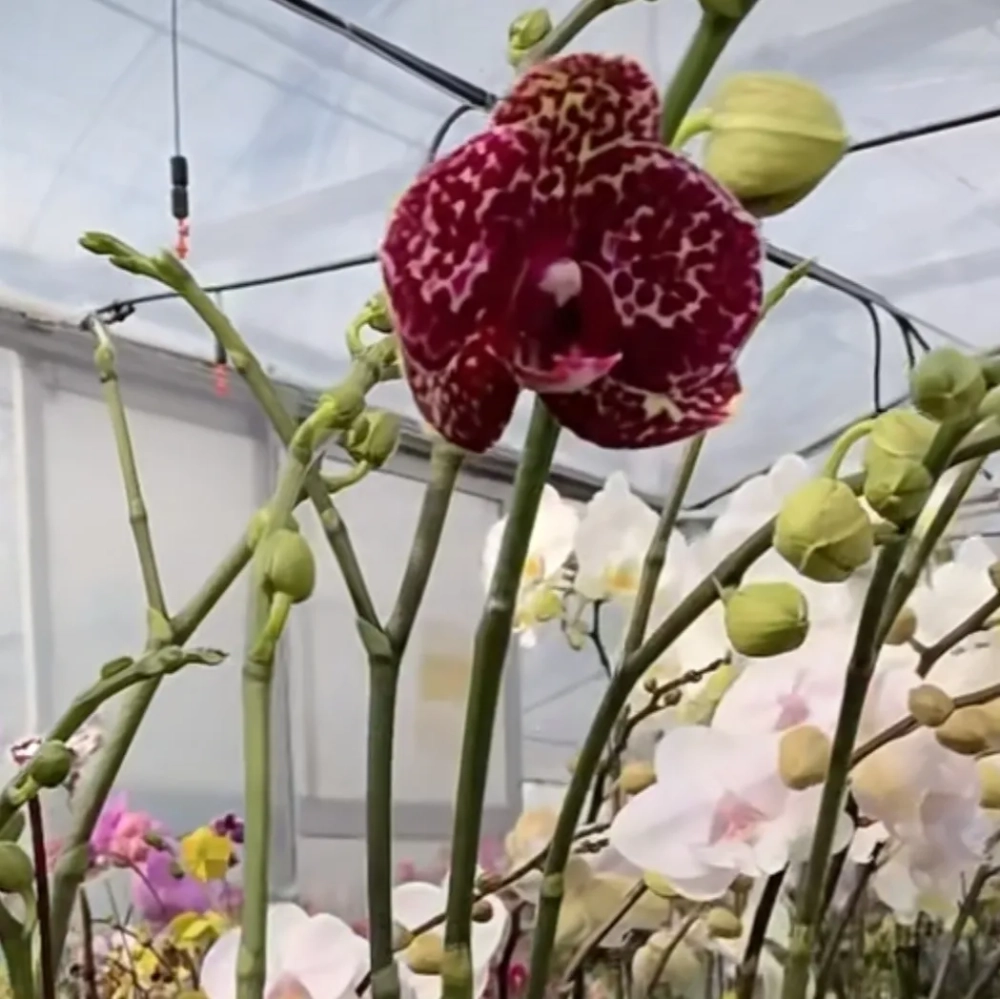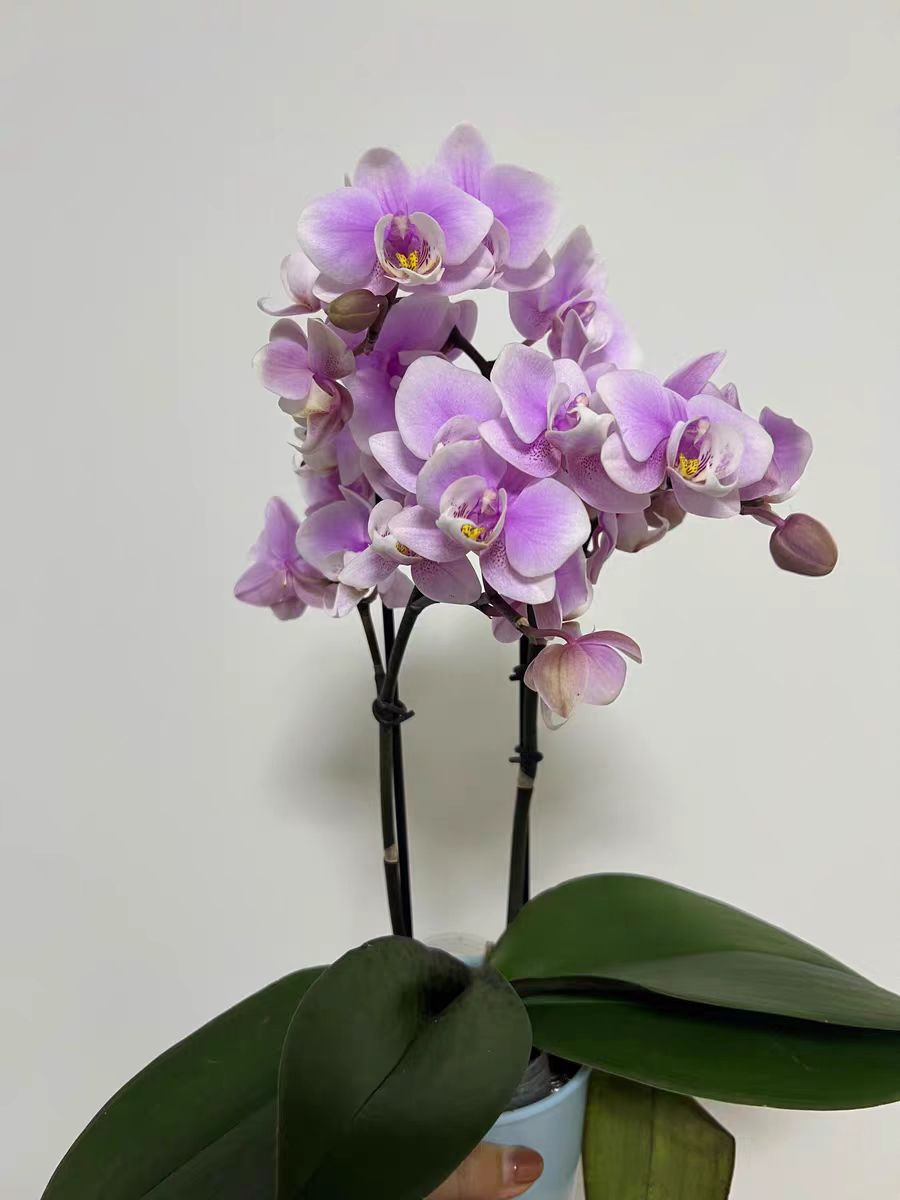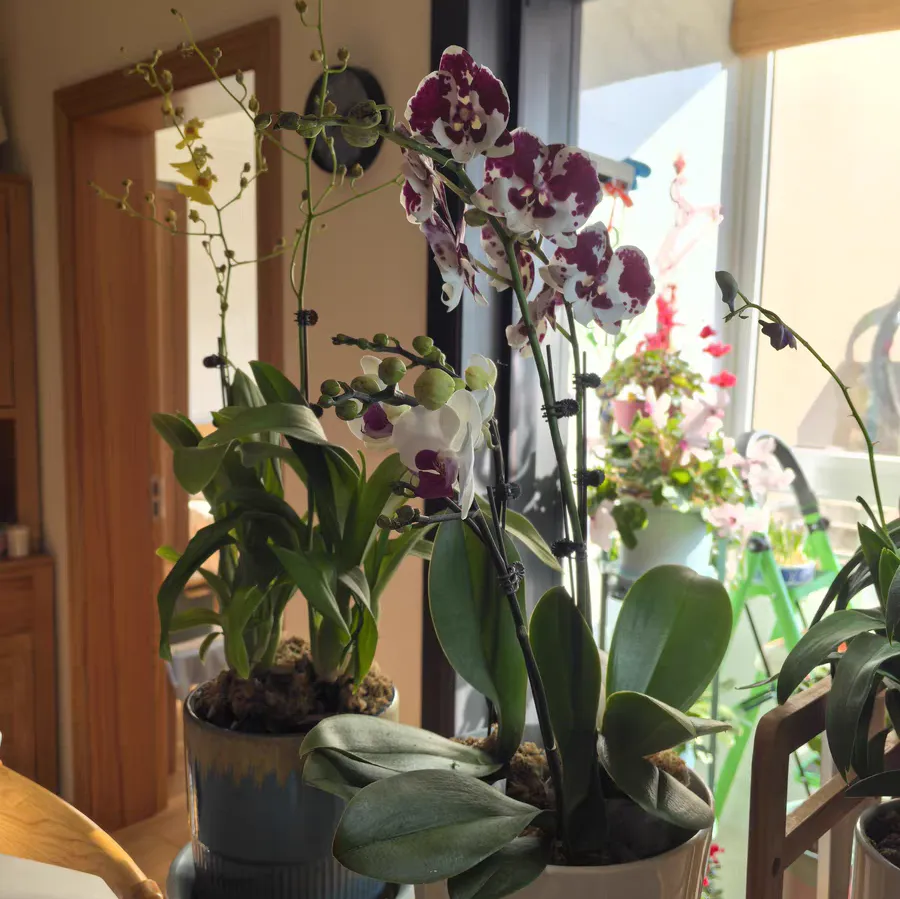Among the varieties of Phalaenopsis, Phalaenopsis "Wild Cat" is deeply loved by many flower enthusiasts for its unique charm.
The flower color of Phalaenopsis "Wild Cat" is quite distinctive. Purple spots are dotted on the petals, looking wild and flamboyant. The petals are chubby and cute, thick and full of texture, which are completely different from the slender petals of ordinary Phalaenopsis. This unique shape makes it stand out among numerous flowers and is unforgettable at first sight.
The flowering period of Phalaenopsis "Wild Cat" is also quite remarkable. Generally, the flowering period can last for 2 - 3 months. During this time, its large flowers bloom continuously, bringing long - lasting visual enjoyment to flower growers. The flower diameter can reach about 10 centimeters, and it often branches out with multiple flowers. Several or even more than ten flowers can bloom on one flower stem. When the flowers are in full bloom, it is extremely lively and highly ornamental.
If you want Phalaenopsis "Wild Cat" to rebloom smoothly, daily maintenance is of great importance. First, for lighting, it prefers bright but not intense scattered light. You can place it indoors near a window but out of direct sunlight. Second, the most suitable growth temperature is 15 - 25°C. Pay attention to preventing heat and cooling down in summer, and take good insulation measures in winter. In terms of watering, adhere to the principle of "watering when the soil is dry and stopping when it's wet" to avoid waterlogging that may cause root rot. Usually, watering once or twice a week is sufficient. Fertilization should not be overlooked either. During the peak growth period, apply a thin liquid fertilizer every 1 - 2 weeks, and increase the application of phosphorus and potassium fertilizers before the flowering period to accumulate sufficient nutrients for its reblooming.
There are also some precautions for maintaining Phalaenopsis "Wild Cat". When repotting, choose flower pots and planting materials with good air permeability, such as sphagnum moss and bark, to ensure that the roots can breathe freely. In addition, regularly check the plants to prevent pests and diseases. Once any signs of pests and diseases are found, take corresponding control measures in a timely manner to avoid the deterioration of the condition affecting the growth and flowering of the plants.
How long is the flowering period of Phalaenopsis "Wild Cat"?

Share with
Tagged in :




Leave a Reply